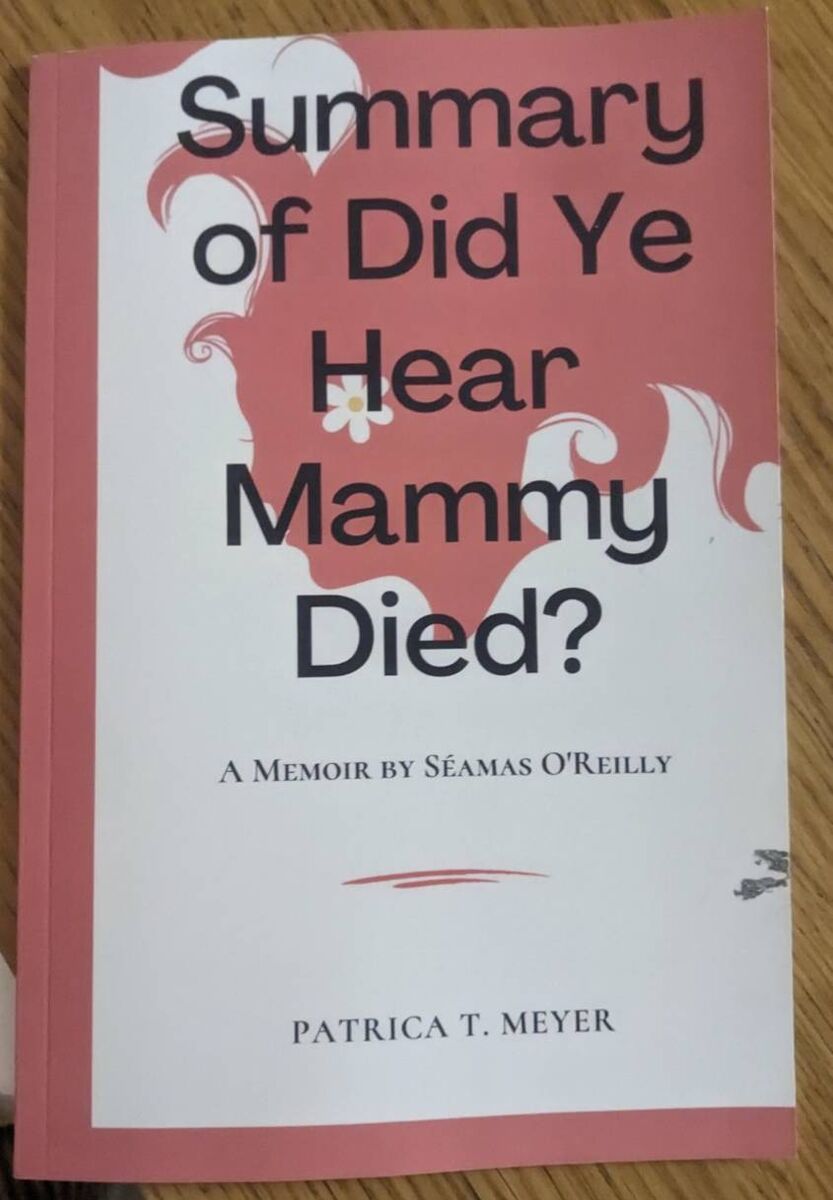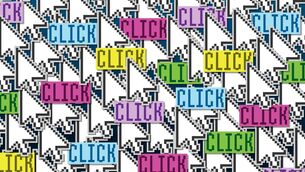Séamas O’Reilly: I open the book with trepidation. My name is on it, but I didn't write it

Séamas O'Reilly. Picture: Orfhlaith Whelan
I open the book with trepidation. My name is on its cover, after all. It is not, however, a book I have written myself.
No, this is “Summary of Did Ye Hear Mammy Died? A Memoir By Séamas O’Reilly” written by “Patricia T. Meyer” and published by Amazon Services LLC.
It’s a “book” which comes up when you search for my own similarly titled – and excellent, best-selling and award-winning – autobiography, which is still available anywhere good books are sold.
When someone first pointed it out to me, I was intrigued. A quick search reveals that this is the only book “Patricia T. Meyer” has ever written. The same goes for the dozen or so other summaries of my book, written by similarly anonymous sounding authors, all released through Amazon’s self-publication strand.
While I would dearly love to believe that these are simply diehard fans of mine, moved by my work to begin a lifelong writing career, it’s clear these are hastily created fake personae masking a very obvious spree of digital plagiarism.
Like the rest, Patricia T. Meyer’s debut is a machine-made facsimile of my book. It is not a book so much as a crude, algorithmical trap, run through a synonymiser so it can bypass plagiarism-detection software, and con unsuspecting rubes into purchasing it by accident.
I bought one immediately.
I had my reasons. Morality aside, it is undeniably interesting that this object exists.
In a weird way, it’s flattering to think a book I wrote did well enough for it to have dozens of fakes circulating on Amazon, and I will admit to having enjoyed showing this ridiculous artefact to friends and family.
The idea of this book is, in and of itself, darkly funny, before we even get to its execution, (on which more presently).
Secondly, I’ve been aware of these scam books for years, and had been tempted to write about what their existence says about writing, authorship and the deadening grind technology is making of every aspect of the creative arts, but never got around to the job.
Now that I had one of these things with my own name on it, I knew my time had come.

I wouldn’t say I had zero quibbles about giving these scammers £3 of my hard-earned cash, but I figured it was a necessary down payment for the exercise.
If I was to discuss this book then, evincing a sense of duty that sounds insane when said out loud, I decided I would have to read it first.
I realise that this is a privilege Patricia_T._Meyer.exe probably did not grant my own work, but I am happy to be the bigger man in any moral contest between a human being and a few lines of automated code.
Not least one designed exclusively to rinse money from my unsuspecting fans. That is, after all, my job.
The book itself is a slim volume, more of a pamphlet really, which gets in and out of my life story in a lean 28 pages. My own editor would likely be thrilled if I were so concise.
Its cover is almost perfectly asinine, in a sort of Microsoft Front Page 98 desktop template way, before I realise that its art shows a woman with a flower in her hair, a riff perhaps on the connection I make between my mother and flowers in the opening chapter.
I have to suppress a small glimmer of appreciation for the fact that my name is spelled correctly.
It quickly becomes apparent why this book is so slight; its 28 pages comprises merely my memoir’s first chapter, separated into paragraphs of three sentences, shot through with arbitrary changes to individual words, to evade detection by the aforementioned plagiarism software; “small” becomes “little”, “sad” becomes “unhappy”, etc.
Perhaps one word out of every ten gets this treatment, meaning the sentences themselves are almost identical to my own, save these tiny edits.
I had hoped the entire book would be written in a flurry of nonsensical synonyms, with every word changed to an increasingly absurd alternative, like when song lyrics get spun back and forth between multiple languages on Google Translate.
In fact, the AI has presumably worked out exactly how little it needs to do to get out of trouble, and I get to the end of the book mostly bemused and, weirdest of all, disappointed by its lack of effort.
Sure, there is a gut level revulsion at the fact that this thing even exists. That writers’ work is so devalued that this cheap photocopy is available.
That, at a time when writers and readers are being exploited by gargantuan tech platforms, those same platforms are incentivising new, ever more mundane, mechanics to exploit both further.
That for all I approach this thing with a raised eyebrow, and a quasi-humorous critical distance, I am reading a computer’s garbled, larcenous approximation of my mother’s death.
But mostly, there is a sense of grim blankness.
A stultifying malaise toward the fact that millennia of the written word, and centuries of mathematics, have led us to yet another tediously dystopian hack job.
There are glimmers of something else, however.
Early in my book, I describe playing with the grooves in the new corduroy trousers I was given to wear, aged five, at my mother’s funeral; “fiddling with unfamiliar cords” is how I put it. Once filtered through a computer consciousness, this becomes “messing with strange wires”.
It is, perhaps, telling that a machine would translate cord as wire, but I am equally beguiled by the serendipitously Hiberno-English lilt of “messing”, and can’t help marvelling at the accidental beauty of the phrase.
It is the only frisson of joy I encounter in this entire exercise, and I will have to satisfy myself with that.
I have stared into the heart of a machine that’s learned my words and seen nothing.
I have messed with its strange wires, and I am done.






